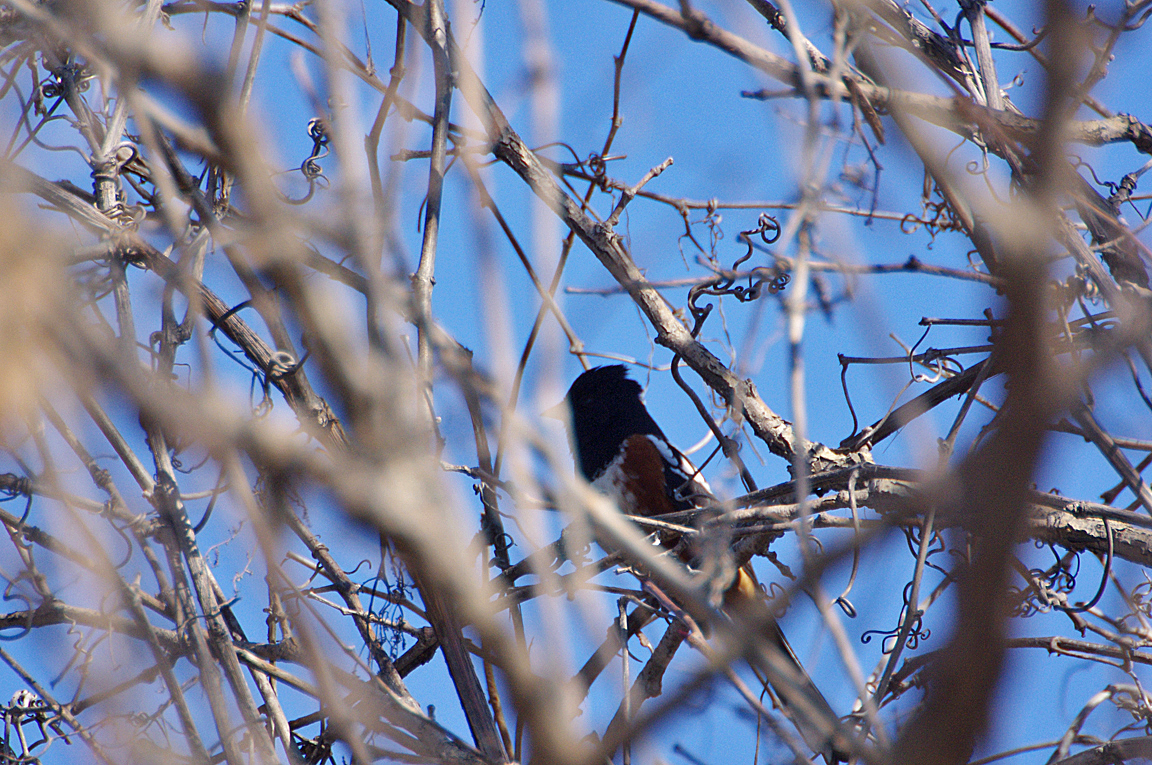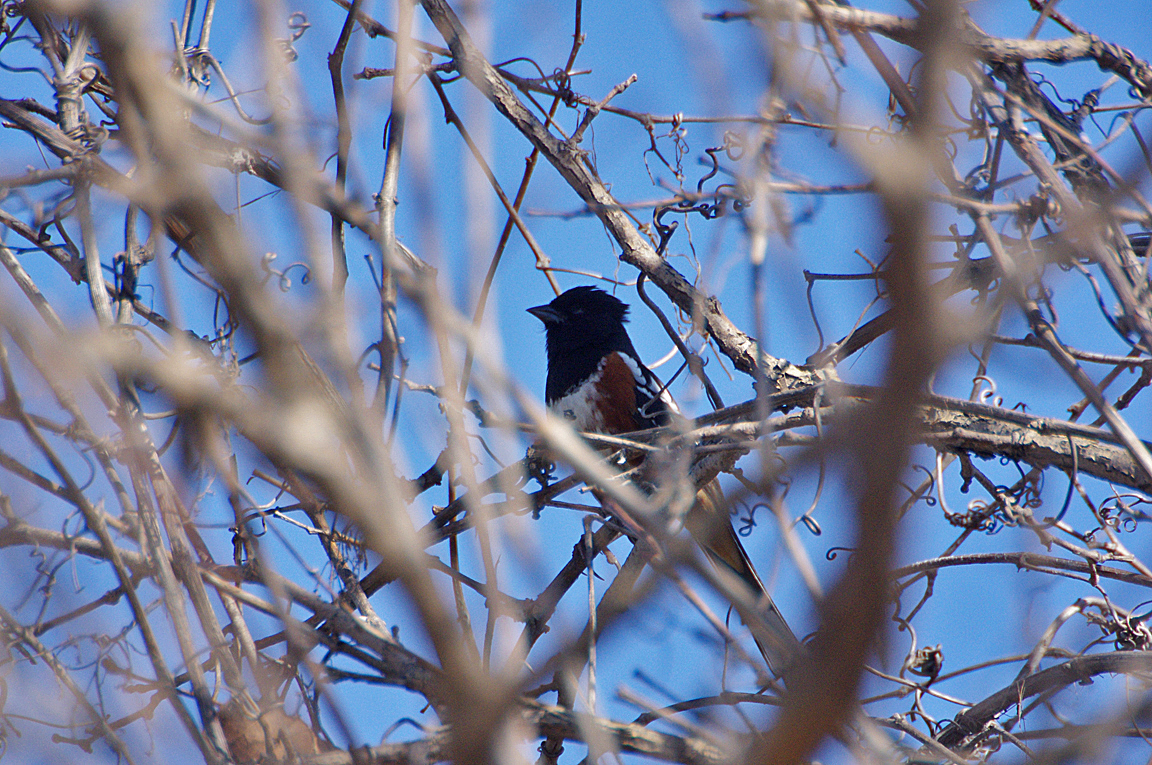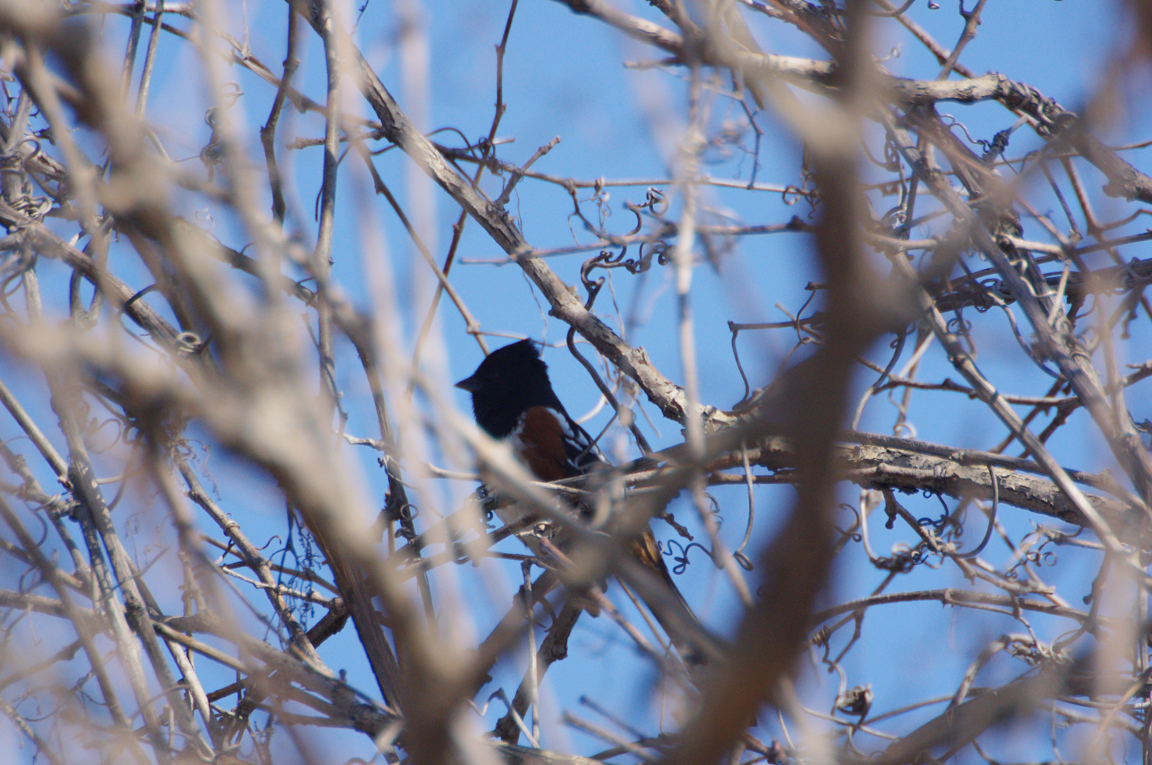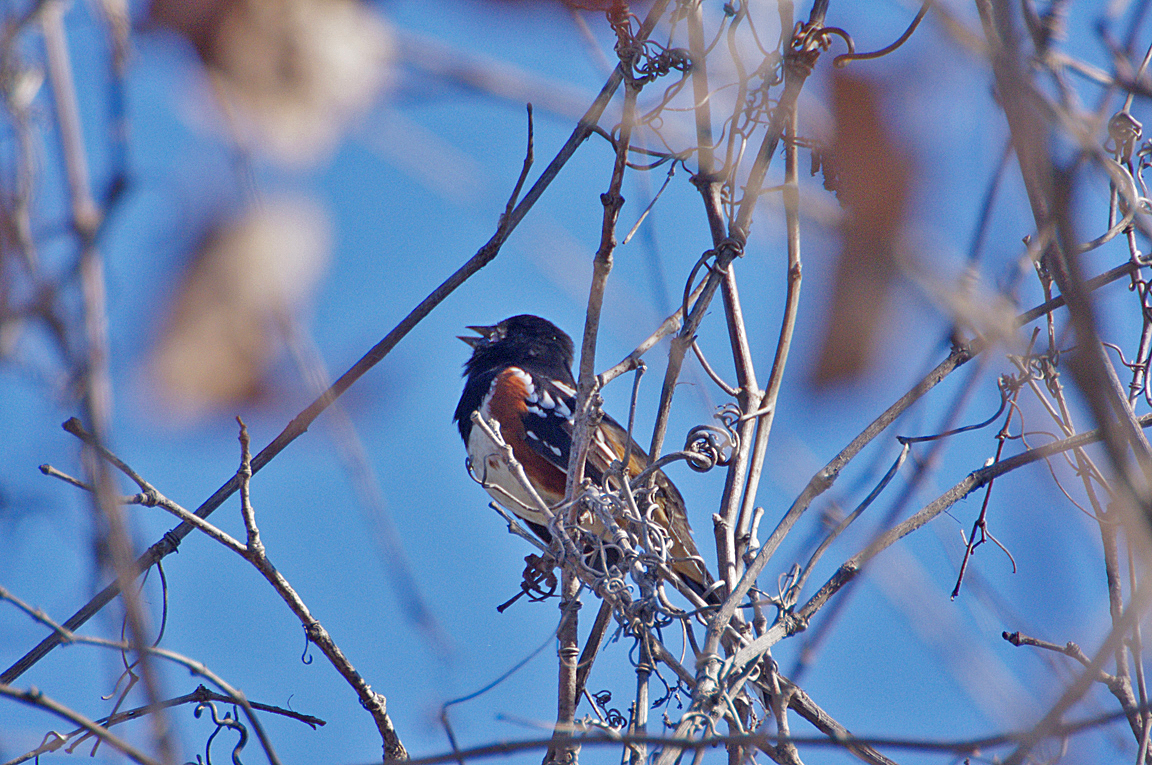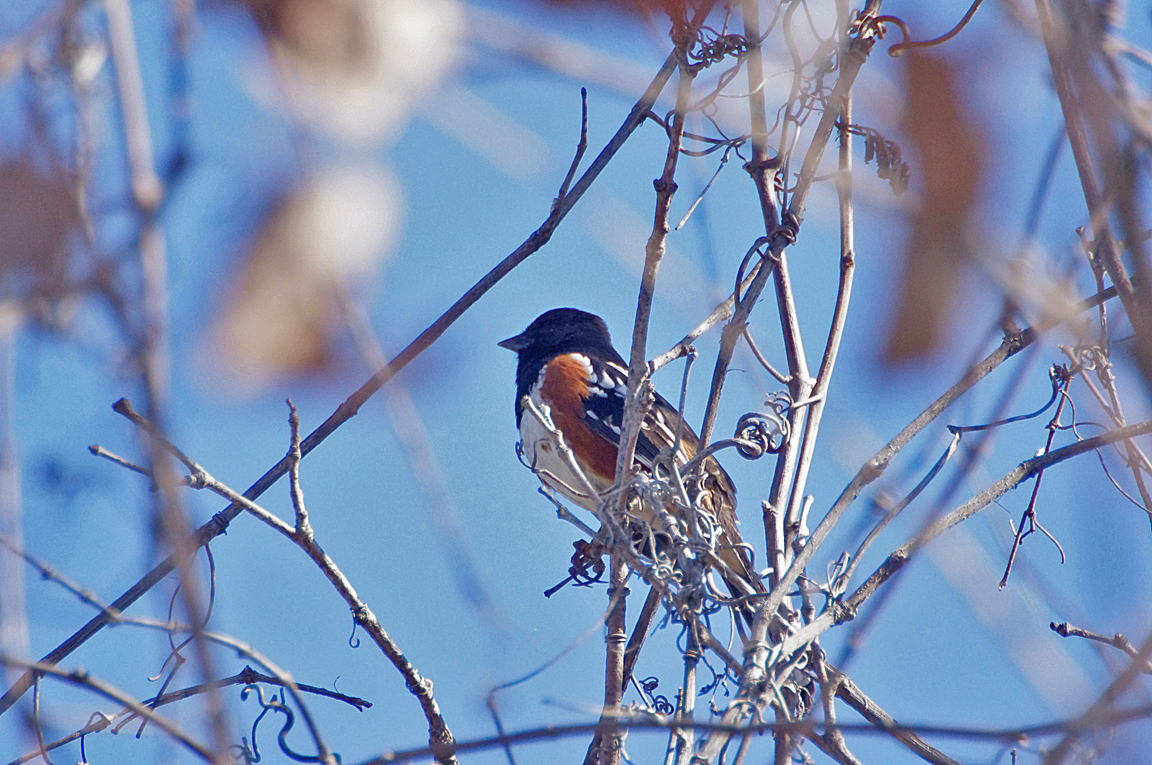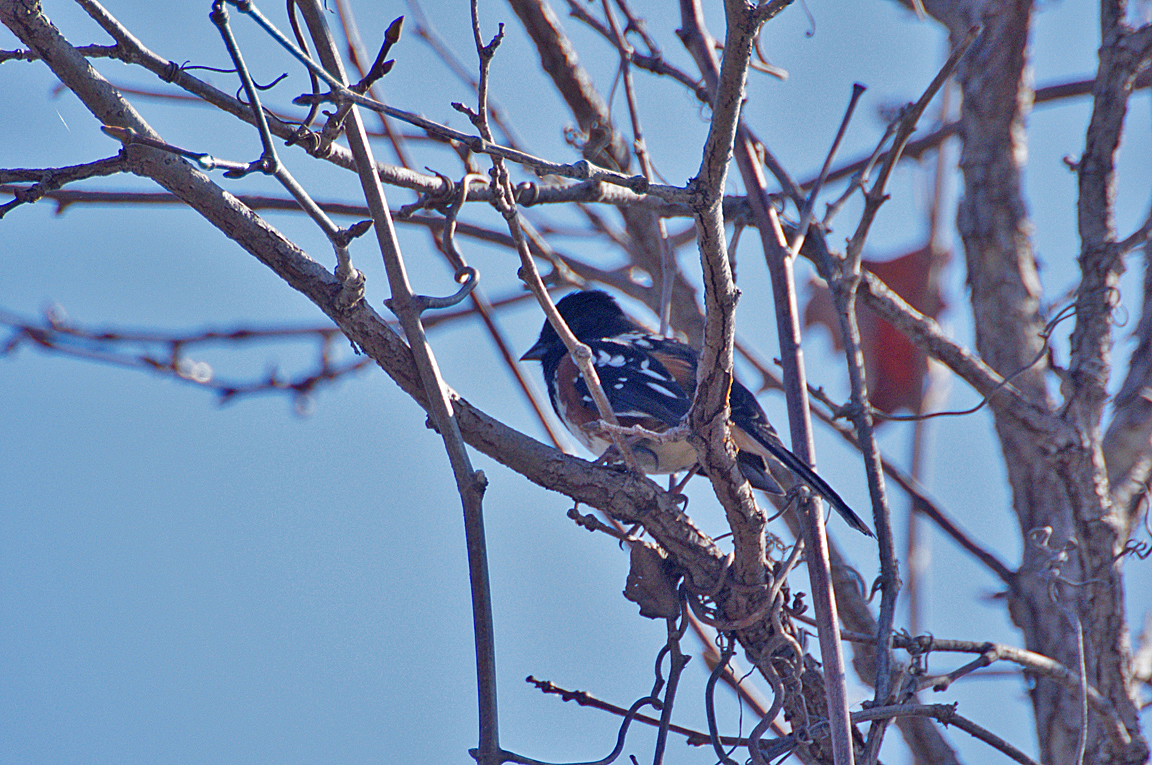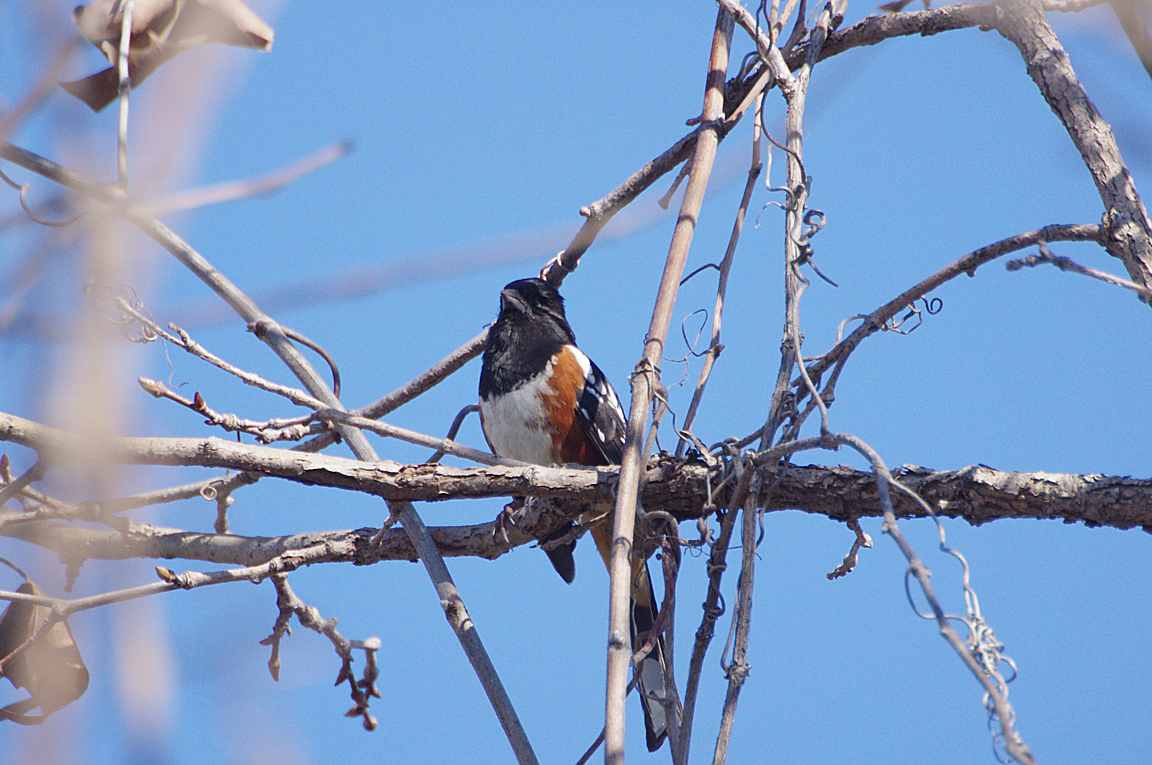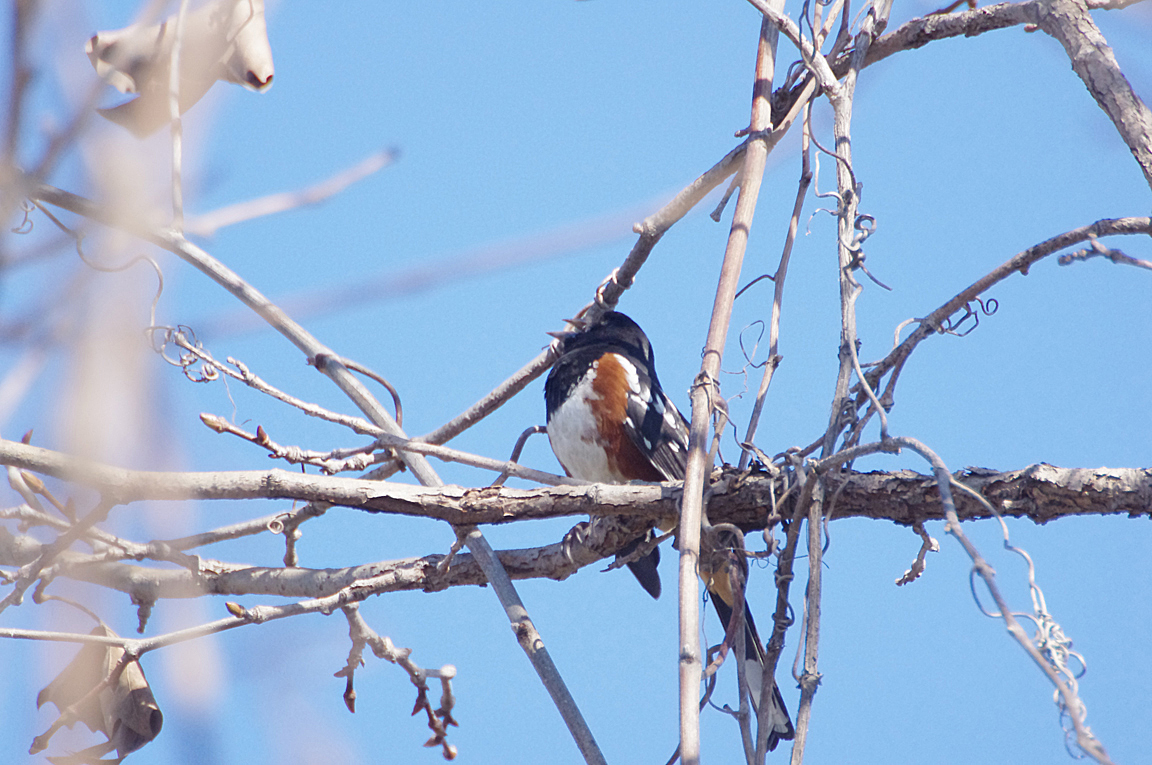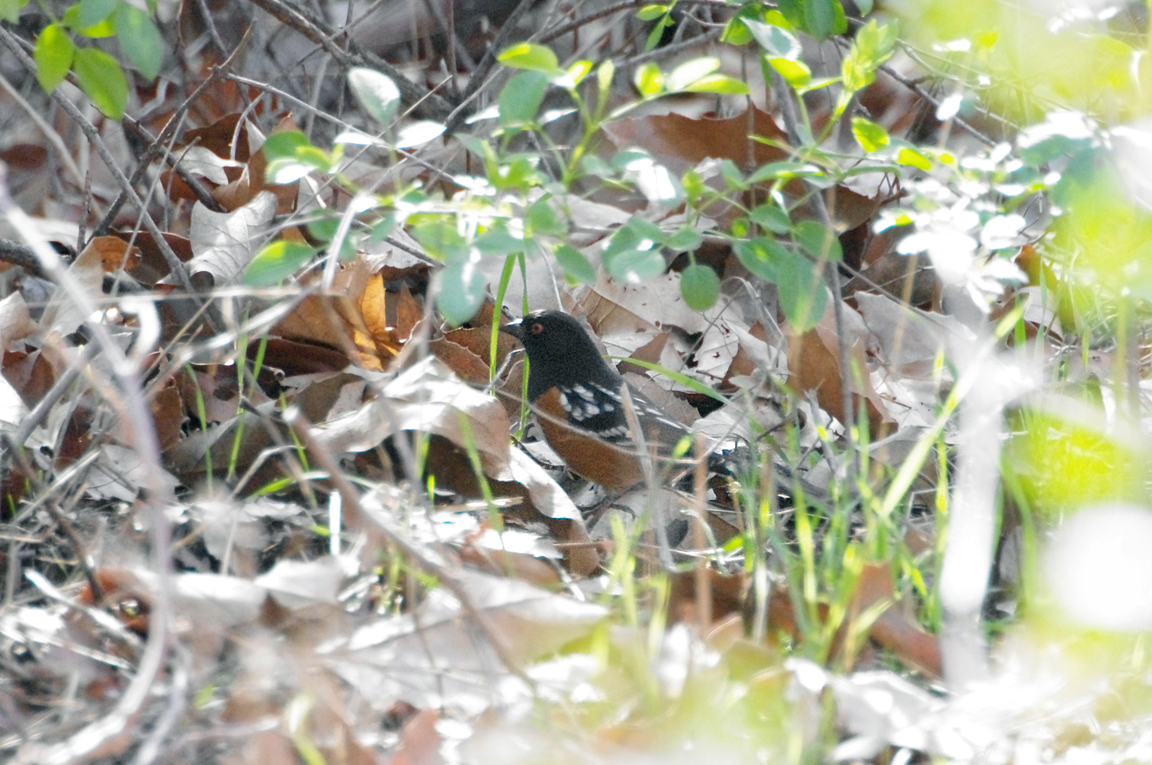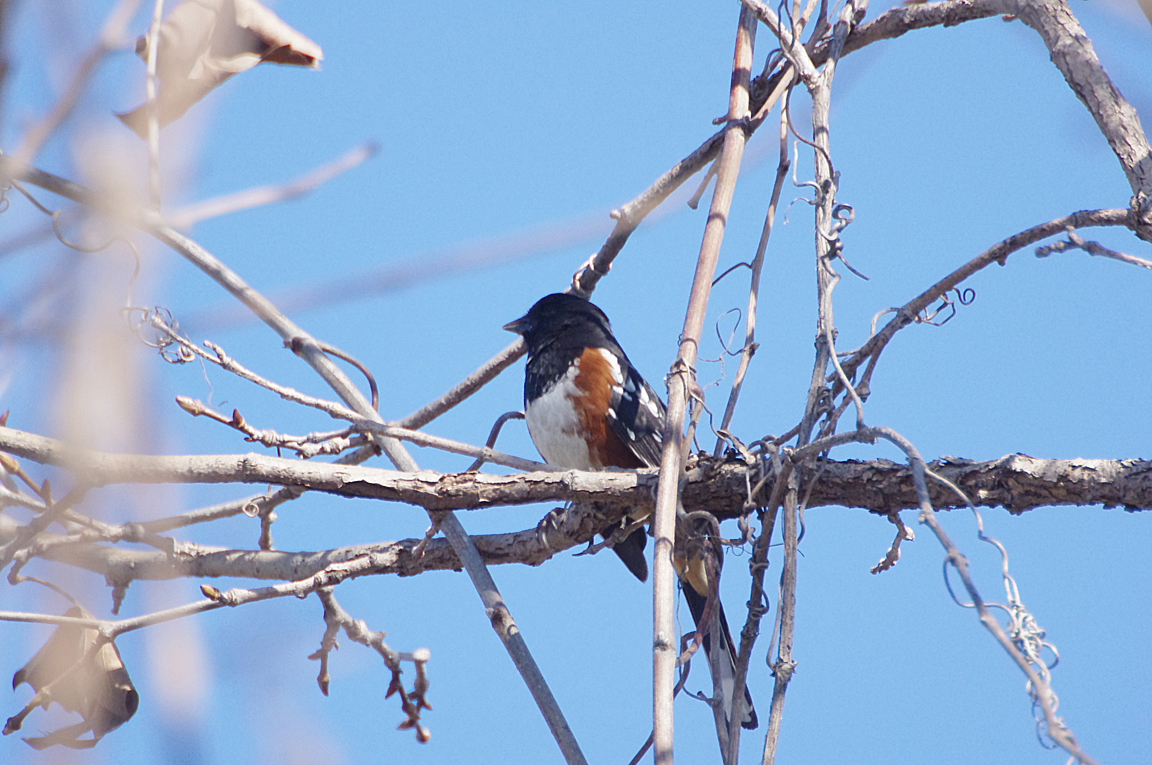|
|
|
 |
Spotted Towhee
|
| Pipilo maculatus | |
The Spotted Towhee is a large, striking sparrow of sun-baked thickets of the West. When you catch sight of one, they're gleaming black above (females are grayish), spotted and striped with brilliant white. Their warm rufous flanks match the dry leaves they spend their time hopping around in. The birds can be hard to see in the leaf litter, so your best chance for an unobstructed look at this handsome bird may be in the spring, when males climb into the shrub tops to sing their buzzy songs.
Interesting Information
-
Watch a Spotted Towhee feeding on the ground; you'll probably observe its two-footed, backwards-scratching hop. This "double-scratching" is used by a number of towhee and sparrow species to uncover the seeds and small invertebrates they feed on. One Spotted Towhee with an unusable, injured foot was observed hopping and scratching with one foot.
-
The Spotted Towhee and the very similar Eastern Towhee used to be considered the same species, the Rufous-sided Towhee. The two forms still occur together in the Great Plains, where they sometimes interbreed. This is a common evolutionary pattern in North American birds - a holdover from when the great ice sheets split the continent down the middle, isolating birds into eastern and western populations that eventually became new species.
-
Early in the breeding season, male Spotted Towhees spend their mornings singing their hearts out, trying to attract a mate. Male towhees have been recorded spending 70 percent to 90 percent of their mornings singing. Almost as soon as they attract a mate, their attention shifts to other things, and they spend only about 5 percent of their time singing.
-
Spotted Towhees live in drier habitats than Eastern Towhees. Some scientists have suggested that the bold white spots on Spotted Towhees' backs help them blend in to the sun-dappled undergrowth.
-
The oldest recorded Spotted Towhee was 10 years 8 months old.
Description
Adult Description
Size & Shape
A large sparrow with a thick, pointed bill, short neck, chunky body, and long, rounded tail.
-
Length Range: 18-19 cm (7-7.5 in)
-
Weight: 40 g (1.4 oz)
-
Size: Small (5 - 9 in)
Color Pattern
Male Spotted Towhees have jet-black upperparts and throat; their wings and back are spotted bright white. The flanks are warm rufous and the belly is white. Females have the same pattern but are warm brown where males are black. In flight, look for white corners to the black tail.

Photo taken from: The Sibley Field Guide by David Allen Sibley

© 2003 Cornell Lab of Ornithology
|
Habitat |
|
Spotted Towhees are birds of dry thickets, brushy tangles, forest edges, old fields, shrubby backyards, chaparral, coulees, and canyon bottoms, places with dense shrub cover and plenty of leaf litter for the towhees to scratch around in. |
|
Behavior |
|
Spotted Towhees rummage in the leaf litter or creep through thick shrubs. Towhees tend to hop wherever they go, moving deliberately and giving themselves plenty of time to spot food items. They scratch at leaves with a characteristic two-footed backward hop, then pounce on anything they've uncovered. During conflicts between two towhees, you may see one bird pick up a piece of twig, bark, or leaf and carry it around. This seems to be an indication of submission. Disturbed or alarm-calling towhees flick their wings while perched, sometimes flashing the white corners in the tail. |
|
Food |
|
In the breeding season, Spotted Towhees eat mainly insects including ground beetles, weevils, ladybugs, darkling beetles, click beetles, wood-boring beetles, crickets, grasshoppers, caterpillars, moths, bees, and wasps. Other leaf-litter arthropods such as millipedes, sowbugs, and spiders are taken as well. They also eat acorns, berries, and seeds including buckwheat, thistle, raspberry, blackberry, poison oak, sumac, nightshade, chickweed, and crops such as oats, wheat, corn, and cherries. In fall and winter, these plant foods make up the majority of their diet. |
Taxonomy
| Kingdom: | Animalia |
| Phylum: | Chordata |
| Subphylum: | Vertebrata |
| Class: | Aves |
| Order: | Passeriformes |
| Family: | Emberizidae |
| Genus: | Pipilo |
| Species: | Pipilo maculatus |
| Subspecies: | Pipilo maculatus arcticus |
| Pipilo maculatus chiapensis | |
| Pipilo maculatus clementae | |
| Pipilo maculatus consobrinus | |
| Pipilo maculatus curtatus | |
| Pipilo maculatus falcifer | |
| Pipilo maculatus falcinellus | |
| Pipilo maculatus gaigei | |
| Pipilo maculatus griseipygius | |
| Pipilo maculatus macronyx | |
| Pipilo maculatus maculatus | |
| Pipilo maculatus magnirostris | |
| Pipilo maculatus megalonyx | |
| Pipilo maculatus montanus | |
| Pipilo maculatus oaxacae | |
| Pipilo maculatus oregonus | |
| Pipilo maculatus orientalis | |
| Pipilo maculatus repetens | |
| Pipilo maculatus socorroensis | |
| Pipilo maculatus umbraticola | |
| Pipilo maculatus vulcanorum |
Similar Species |
|
|
Bird Sound |
|
Spotted Towhees make a catlike mew call, a little more than a half-second long. It seems to be used for scolding as well as by perched or foraging birds. Pairs sometimes exchange a soft, lisping call to stay in contact. Spotted Towhees also give a high, thin flight call. |
|
Eggs look like this |
|
Photo taken from: ARCTOS Collaborative Collection Management Solution |

